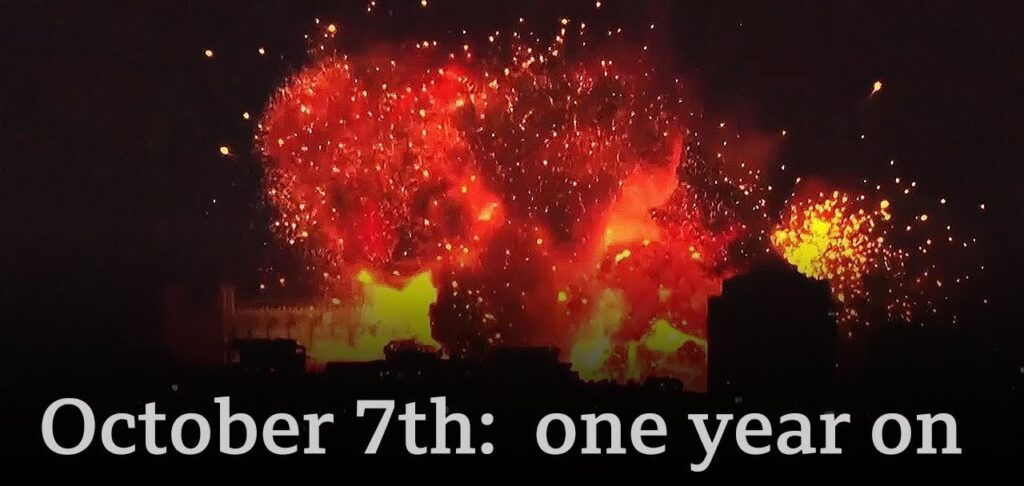A Year of War in West Asia

Introduction: A Year of Turmoil
West Asia, often referred to as the Middle East, has been a region of turmoil for decades, but the past year has been particularly devastating. With nations torn apart by war, civilians caught in the crossfire, and a humanitarian crisis escalating beyond control, the region has seen a year of unprecedented chaos. What led to this eruption? What are the consequences, and where do we go from here?
Historical Background of West Asian Conflicts
To understand the current situation, it’s crucial to delve into the historical roots of conflict in West Asia. The geopolitical landscape has always been marked by complex alliances, religious differences, and the struggle for power. From the era of colonialism to the formation of modern-day states, West Asia has seen countless conflicts over land, resources, and political ideology.
Roots of the Conflict
At the heart of many West Asian conflicts is a struggle over identity, resources, and ideology. The legacy of colonialism left deep scars, with arbitrary borders drawn by foreign powers that did not account for the ethnic, religious, or cultural ties of the people who lived there. Add to this mix the competition over valuable resources like oil, and it’s easy to see why tensions have simmered for so long.
Major Players Involved
From regional powers like Iran, Saudi Arabia, and Turkey to global superpowers such as the United States and Russia, many countries have a stake in the region. These nations often use local conflicts to advance their own interests, turning West Asia into a geopolitical chessboard.
The Catalyst: How It All Began
Though the region has seen conflict for years, specific triggers over the past year have escalated tensions. Whether it’s the political instability in countries like Syria and Yemen or the increase in foreign intervention, these catalysts have set the region on fire.
Political Tensions
Internal political strife has played a significant role. In nations like Iraq and Lebanon, governmental instability and public dissatisfaction have sparked protests, uprisings, and, eventually, full-blown conflict. The power vacuum in these states has made it easier for external powers to meddle, exacerbating the situation.
Foreign Intervention
The involvement of foreign powers—whether through direct military action or proxy wars—has only fueled the fire. The U.S., Russia, and even China have vested interests in the region’s resources and political influence, further complicating the path to peace.
Major Battles and Turning Points
The past year has witnessed several key battles that have changed the course of the war. From urban warfare in key cities to brutal desert battles, these events have shaped the direction of the conflict.
Key Strategic Locations
Cities like Aleppo, Mosul, and Sana’a have become epicenters of violence. These locations are not just geographically significant but also hold immense strategic value for control over trade routes, military bases, and resources.
Impact on Civilians
Tragically, civilians have borne the brunt of this conflict. Homes have been destroyed, families torn apart, and millions displaced. The devastation is visible in the faces of the refugees fleeing the region, searching for safety in neighboring countries or even further afield.
Humanitarian Crisis and Refugees
As the war rages on, the humanitarian crisis has reached alarming levels. Millions of people are now refugees, with countless others living in dire conditions within conflict zones.
The Rise in Refugee Numbers
Over the past year, refugee numbers have skyrocketed. According to the UN, millions of West Asians have fled their homes, seeking asylum in neighboring countries like Jordan, Lebanon, and Turkey. Many of them face uncertain futures in overcrowded camps with limited access to basic necessities.
Human Rights Violations
With reports of war crimes, human rights violations, and abuses by all sides, the moral toll of the war is staggering. Civilians have been subjected to indiscriminate bombings, sieges, and even chemical attacks, further deepening the scars of the conflict.
Economic Fallout: How War Impacted the Region
War is costly—not just in terms of lives but also economically. West Asia’s economy has suffered immensely, and the repercussions are being felt globally.
Destruction of Infrastructure
Infrastructure, including schools, hospitals, and public utilities, has been decimated in many areas. This has made daily life almost impossible for those still living in conflict zones, hampering efforts to rebuild.
Sanctions and Trade Disruptions
Many countries in the region have faced sanctions, further crippling their economies. In addition, war has disrupted key trade routes, making it difficult for nations to import and export essential goods, worsening the financial toll.
Media Coverage and Propaganda
In any conflict, the media plays a vital role, and the West Asian wars are no different. However, media coverage often reflects biases that shape public perception.
The Role of Social Media
Social media has become a key tool for both sides in this conflict. While it has provided a platform for real-time updates, it has also been used to spread misinformation and propaganda, further muddying the waters.
International Media Bias
Western media often portrays the conflict through a particular lens, sometimes ignoring the nuanced realities on the ground. This skewed narrative can shape global opinions and influence foreign policies, often to the detriment of those living in the region.
Diplomatic Efforts: Are Peace Talks Working?
While several attempts have been made to broker peace, the success of these negotiations remains questionable.
Major Peace Negotiations
There have been multiple rounds of peace talks involving the United Nations and other international bodies. However, with so many competing interests, finding a consensus has been challenging.
Challenges in Reaching an Agreement
One of the key challenges is that many parties involved in the conflict are not willing to compromise. With so many stakeholders—including regional powers, rebel groups, and international actors—the path to peace is fraught with obstacles.
Global Reactions and Involvement
The international community’s response to the conflict in West Asia has been mixed. Some nations have called for immediate ceasefires, while others have become involved in military actions.
Superpowers’ Influence
Countries like the U.S., Russia, and China have played a significant role in the conflict. Whether through arms sales, direct military intervention, or diplomatic pressure, their actions have shaped the course of the war.
The Role of Neighboring Countries
Neighboring countries like Turkey, Iran, and Saudi Arabia have also played critical roles, often backing different sides in the conflict. Their involvement has added layers of complexity, making it harder to achieve peace.
Environmental Impact of the War
Beyond the human and economic toll, the environment has also suffered.
Destruction of Natural Resources
The war has led to the destruction of vital natural resources, including water supplies, agricultural land, and oil reserves. The damage to these resources could take years—if not decades—to repair.
Pollution and Environmental Degradation
Bombings and military actions have caused significant environmental damage, including air and water pollution. The environmental degradation will have long-lasting consequences for the region’s recovery.
The Social Fabric: Impact on Families and Communities
Beyond the immediate devastation, the war has left a deep mark on the social fabric of West Asia.
Long-term Psychological Trauma
The psychological scars of the war will linger for generations. Children who have grown up in war zones face severe trauma, which could affect their ability to live normal lives in the future.
Breakdown of Social Order
With the breakdown of governments and the rule of law, many communities have descended into chaos. This breakdown has led to an increase in crime, lawlessness, and societal fragmentation.
Possible Resolutions and Future Outlook
As we look ahead, it’s important to consider potential solutions and the future of the region.
Predictions for the Next Year
Many experts predict that the conflict will continue for the foreseeable future. However, there are glimmers of hope as peace talks continue, and international organizations become more involved.
The Role of International Organizations
The United Nations, Red Cross, and other international organizations have been instrumental in providing aid and facilitating peace talks. Their continued involvement will be crucial in shaping the region’s future.
Conclusion: What We’ve Learned So Far
A year of war in West Asia has taught us many hard lessons. The conflict has taken a heavy toll on the region, both in human and economic terms. However, with continued diplomatic efforts and international support, there is hope that peace may one day prevail. Until then, the people of West Asia will continue to endure the hardships of war, hoping for a better future.



